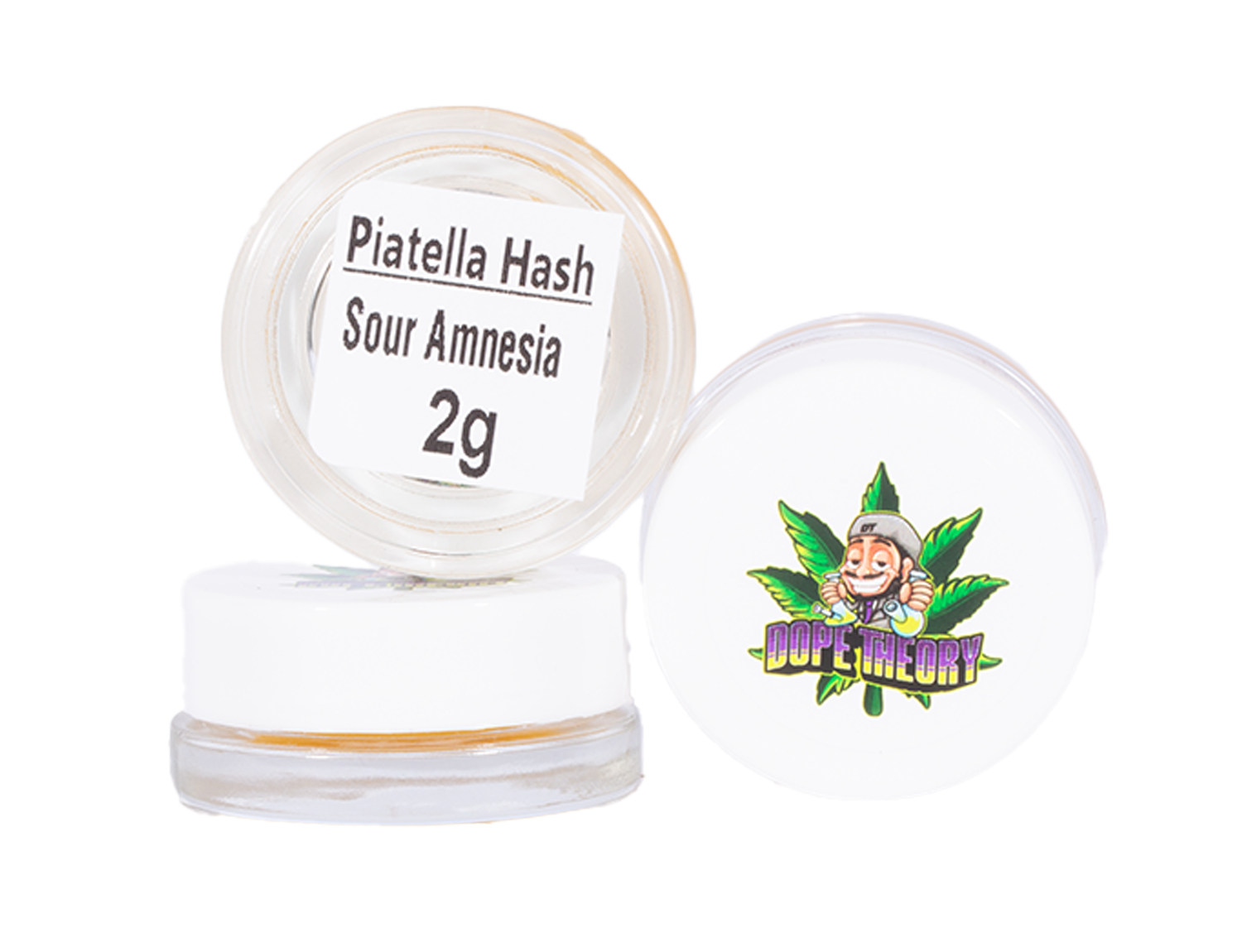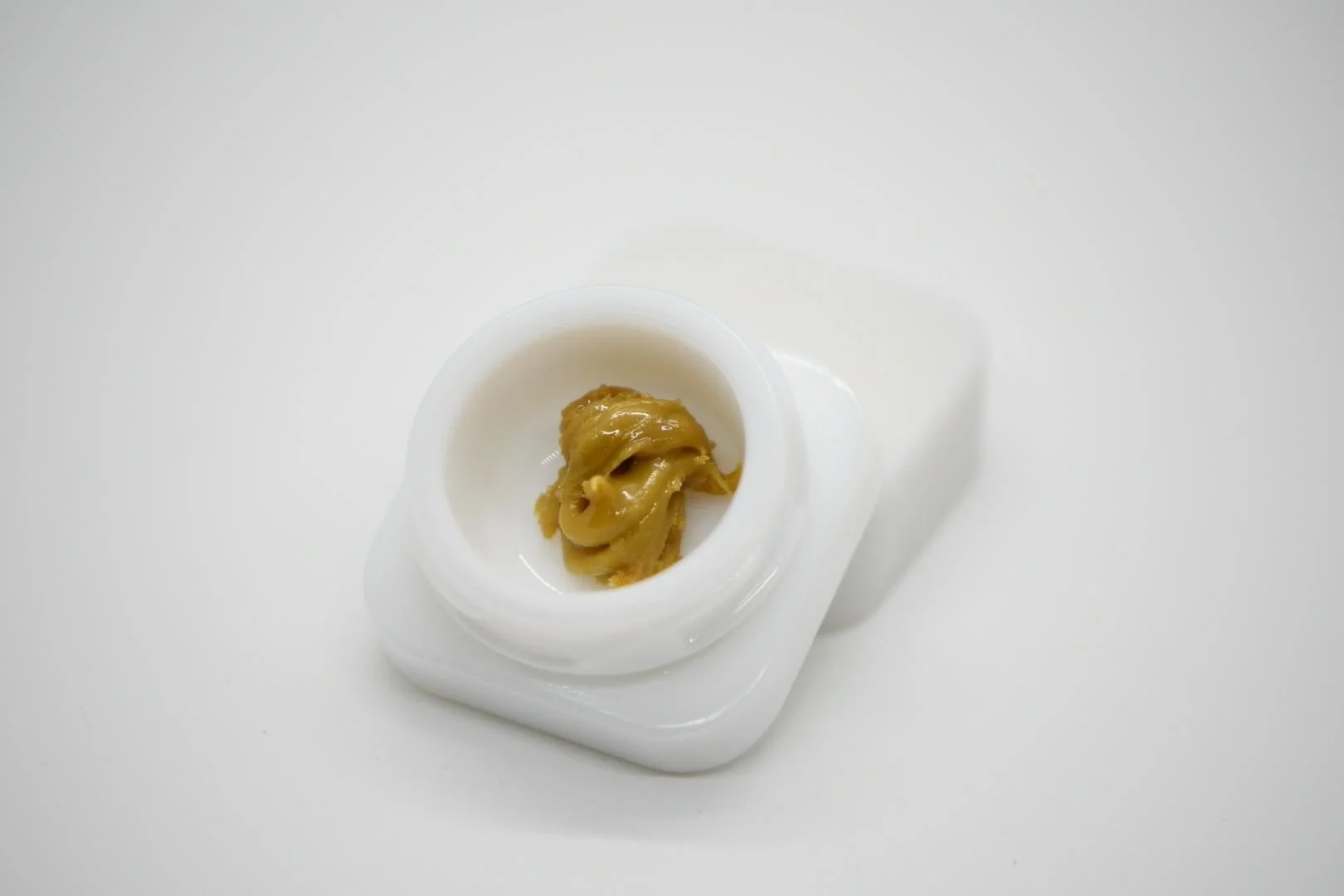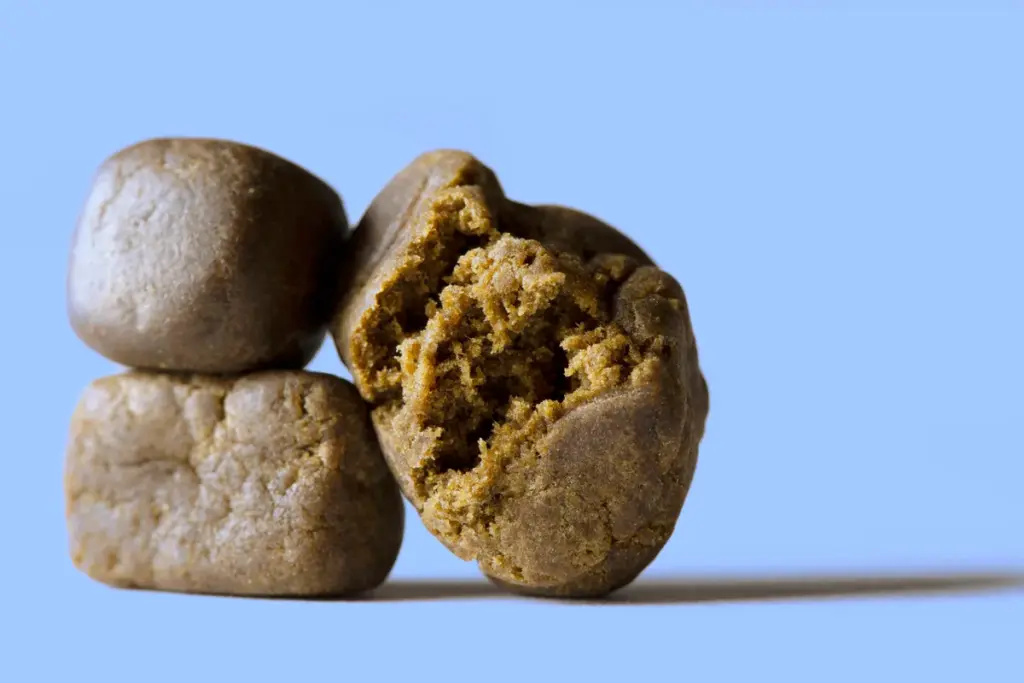About Cannabis Products
Exploring Hash Varieties: A Complete Guide to the Original Cannabis Concentrate
Cannabis hash has fascinated enthusiasts and researchers for centuries. As a concentrated form of cannabis, this potent substance offers unique experiences and variations that go far beyond traditional marijuana consumption. From traditional methods passed down through generations to modern extraction techniques, hash represents a complex and intriguing world of cannabis concentrates.
Different cultures and regions have developed their own distinctive hash-making techniques, creating a rich tapestry of products with varying textures, potencies, and extraction methods. Whether you’re a curious newcomer or an experienced cannabis consumer, understanding the diverse types of hash can provide deeper insights into this ancient practice. I’ll walk you through some of the most prominent and interesting hash varieties that have emerged from around the globe.
Key Takeaways
- Hash is a concentrated cannabis product with diverse global production techniques, ranging from traditional hand-rubbing methods to modern mechanical extraction processes that offer unique potency and flavour profiles
- Geographic regions significantly influence hash production, with areas like Morocco, Afghanistan, and Lebanon developing signature hash-making traditions that contribute distinct characteristics to cannabis concentrates
- Multiple hash varieties exist, including pressed hash, dry sift hash, and bubble hash, each offering different extraction methods, potency levels, and consumption experiences for cannabis enthusiasts
- Hash potency varies widely, typically ranging from 30-70% THC concentration, which means users should approach consumption carefully and understand the potential physiological and psychological effects
- Modern hash production has evolved from manual techniques to sophisticated technological processes, incorporating advanced methods like cryogenic processing, micron screening, and solventless extraction to improve concentrate quality and purity
- Legal and health considerations are crucial when exploring hash products, with regulations varying by region and consumption methods requiring careful temperature control and responsible usage
The world of cannabis hash is diverse, dynamic, and constantly evolving, with techniques that range from hand-rolling traditional methods to advanced solvent-based extractions. Each type offers a unique profile of flavours, potency and experience.
Origins and History of Cannabis Hash

Hash originates from ancient civilizations that discovered concentrated cannabis resin extraction techniques. The practice of creating hash spans thousands of years across multiple continents with complex cultural and agricultural traditions.
Traditional Hashish Production Methods
Traditional hash production involves extracting cannabis trichomes through mechanical separation techniques. Artisan producers historically used hand-rolling methods where fresh cannabis plants were gently rubbed between palms to collect sticky resin crystals. These manual techniques created sticky, dark-coloured concentrates with intense cannabinoid profiles.
Key traditional extraction approaches include:
- Hand-rubbing technique: Collectors physically manipulate cannabis flowers
- Dry sifting method: Filtering dried cannabis through fine mesh screens
- Cold water extraction: Separating trichomes using temperature-controlled water processes
Geographic Variations in Hash Creation
Different geographic regions developed unique hash production techniques reflecting local cannabis cultivation practices. Middle Eastern and North African cultures pioneered early hash-making traditions with distinctive regional characteristics.
Prominent hash-producing regions and their signature methods:
- Morocco: Dry sifting techniques producing soft blonde hash
- Afghanistan: Hand-pressed dark brown hash with high THC concentrations
- Lebanon: Mountainous terrain enabling specialized cannabis cultivation
- India: Charas method involving manual resin collection from living cannabis plants
Hash production techniques evolved from traditional manual processes to modern mechanical and solventless extraction technologies. Each region contributed specialized knowledge that shaped contemporary cannabis concentrate practices.
Pressed Hash Varieties
Pressed hash represents a traditional form of cannabis concentrate crafted through intricate extraction and compression techniques. These varieties showcase the rich cultural heritage of cannabis production across different global regions.
Afghani Hash

Afghani hash stands out as a premium pressed hash variety renowned for its exceptional potency and distinctive characteristics. Originating from the mountainous regions of Afghanistan, this hash type emerges from time-honoured extraction methods that transform cannabis resin into dense black or dark brown blocks.
Key features of Afghani hash include:
- Intense aroma profile
- Deep dark coloration
- High concentration of cannabinoids
- Traditional hand-pressing techniques
- Robust psychoactive effects
Extraction involves carefully collecting trichomes from cannabis plants and compressing them into compact blocks. The process preserves the plant’s essential oils and concentrated cannabinoid content, resulting in a potent and flavorful product.
Moroccan Hash
Moroccan hash emerges from the historic Rif Mountains, representing a centuries-old cannabis production tradition. This pressed hash variety distinguishes itself through a meticulous sifting and pressing process that transforms cannabis trichomes into distinctive blocks.
Characteristic attributes of Moroccan hash include:
- Dark exterior with lighter interior
- Soft and pliable texture
- Smooth consumption experience
- Moderate potency levels
- Fine-screen extraction method
Producers collect trichomes by carefully sifting dried cannabis material through specialized screens. The collected resin undergoes precise kneading and compression, creating hash blocks with a unique texture and consistent quality.
Lebanese Hash
Lebanese hash represents another significant pressed hash variety with deep cultural roots in cannabis production. Originating from Lebanon’s cannabis-cultivating regions, this hash type embodies traditional extraction techniques passed through generations.
Distinctive elements of Lebanese hash feature:
- Carefully selected cannabis strains
- Precise manual extraction processes
- Consistent texture and appearance
- Balanced cannabinoid profiles
- Cultural significance in regional production
The production method involves carefully separating trichomes from cannabis plants and compressing them into uniform blocks. Lebanese producers emphasize craftsmanship and preservation of authentic hash-making traditions.
Dry Sift Hash Types
Dry sift hash represents one of the oldest and most traditional methods of cannabis concentrate extraction. This technique involves carefully separating trichome heads from cannabis plant material using specialized screening processes.
Traditional Dry Sift
Traditional dry sift methods originated in regions like Morocco and Afghanistan, where cannabis cultivation has deep historical roots. Producers use fine mesh screens with varying micron sizes to gently sift dried cannabis flowers. The process requires skilled hand movements to carefully separate delicate trichome crystals from plant matter. Experienced extractors can create multiple quality grades by using progressively finer screens that capture different sizes of trichome heads.
Modern Dry Sift Techniques
Modern dry sift techniques have evolved to incorporate advanced technological interventions. Professional extractors now use specialized vibrating screens with precise mesh configurations that minimize plant contamination. Cannabis processors employ cold room environments to preserve trichome integrity during extraction. Advanced techniques include:
- Freezing plant material before sifting
- Using computerized screening equipment
- Implementing multi-stage filtration processes
- Controlling temperature and humidity during extraction
Quality Grades of Dry Sift
Dry sift hash is categorized into distinct quality grades based on purity and trichome concentration:
| Grade | Purity Level | Characteristics |
|---|---|---|
| Full Melt | 90-99% | Zero plant material |
| Half Melt | 70-89% | Minimal plant contamination |
| Cooking Grade | 50-69% | Higher plant material content |
Each grade reflects the precision of extraction and the skill of the hash maker in separating pure trichome heads from plant material.
Bubble Hash Techniques

Bubble hash represents an innovative cannabis concentrate extraction method that uses ice water to separate trichomes from plant material. This technique produces a high-quality hash with exceptional purity and potency.
Cold Water Extraction Method
Cold water extraction creates bubble hash through a precision-driven process. I’ll break down the key steps:
- Freezing Cannabis: Freeze-dried cannabis plant material to 32°F to 40°F, making trichome heads brittle
- Ice Water Agitation: Submerge frozen cannabis in ice-cold water and gently agitate to dislodge trichome heads
- Multi-Layer Screening: Use specialized mesh bags with varying micron sizes (45μm-220μm) to filter trichome heads
- Trichome Collection: Carefully collect and dry separated trichome heads
- Final Processing: Press collected trichomes into compact hash blocks
Different Bubble Hash Grades
Bubble hash quality varies based on trichome purity and extraction precision. I categorize grades as follows:
| Grade | Micron Size | Purity Level | Characteristics |
|---|---|---|---|
| Full Melt | 90-73μm | Highest | Completely melts when heated |
| Half Melt | 120-160μm | Medium | Partially melts with some residue |
| Cooking Grade | 220μm | Lowest | Contains more plant materials |
Each grade offers unique potency and consumption experiences for cannabis enthusiasts at Bud Hub Express.
Mechanical Separation Styles
Mechanical separation techniques are sophisticated methods for extracting cannabis trichomes. They utilize precise physical processes to create high-quality hash concentrates. These approaches leverage mechanical interactions to separate resinous trichome heads from the plant material without introducing chemical solvents.
Bubble Hash (Ice Water Hash)
Bubble hash emerges from a cold water extraction process that transforms cannabis trichome collection. The method involves:
- Freezing cannabis materials to make trichomes brittle
- Agitating plant matter in ice-cold water
- Filtering trichomes through micron-sized mesh bags
- Collecting and pressing separated trichomes
Extraction temperatures between 35-40°F ensure maximum trichome separation. Professional producers categorize bubble hash into three quality grades:
| Grade | Melt Characteristics | Purity Level |
|---|---|---|
| Full Melt | Completely liquefies | Highest |
| Half Melt | Partially melts | Moderate |
| Cooking Grade | Minimal melting | Lower |
Dry Sift Hash (Pollen Hash)
Dry sift hash represents a traditional mechanical separation technique involving precise screening processes. Key characteristics include:
- Using fine mesh screens to separate trichomes
- Manually or mechanically sifting dried cannabis flowers
- Producing a fine, sandy, powder-like concentrate
- Creating multiple quality grades based on trichome purity
Extraction techniques encompass:
- Air-drying cannabis materials
- Freeze-drying for enhanced trichome brittleness
- Utilizing screens with varying micron sizes
- Collecting and pressing separated trichome heads
Mechanical Sifting Hash
Mechanical sifting hash utilizes advanced screening equipment to efficiently separate cannabis trichomes. Primary components include:
- Fine mesh screening apparatus
- Precision mechanical agitation systems
- Temperature-controlled processing environments
- Multi-stage filtration techniques
- Standardizes trichome extraction
- Minimizes plant material contamination
- Ensures consistent concentrate quality
- Maximizes trichome head recovery
Emerging Hash Concentrates
As cannabis concentrate technology advances, new extraction methods and innovative techniques are transforming the hash production landscape. These emerging technologies push the boundaries of traditional hash-making by introducing sophisticated processes that enhance purity, potency, and consumer experience.
Bubble Hash Variants
Bubble hash represents a cutting-edge mechanical separation technique that delivers exceptional cannabis concentrates. This method uses ice water and specialized mesh bags to extract trichomes from cannabis plant material with remarkable precision. Bubble hash variants include:
- Full Melt Bubble Hash: Contains 90-99% pure trichome heads that completely vaporize without residue
- Half Melt Bubble Hash: Features 70-89% trichome purity with partial melting characteristics
- Cooking Grade Bubble Hash: Lower-grade concentrate with 50-69% trichome concentration
Solventless Extraction Methods

Solventless extraction techniques prioritize chemical-free cannabis concentrate production. These methods leverage mechanical processes to isolate trichomes:
- Rosin Press Extraction: Applies controlled heat and pressure to cannabis flowers or hash
- Dry Sift Refinement: Uses advanced screening techniques to separate trichome heads
- Cold Plate Extraction: Utilizes temperature-controlled surfaces to extract pure resin
Modern Cannabis Concentrate Innovations
| Innovation | Key Characteristics | Extraction Efficiency |
|---|---|---|
| Micron Screening | Precise trichome separation | 85-95% |
| Cryogenic Processing | Ultra-cold extraction | 90-98% |
| Automated Sifting | Consistent quality control | 88-96% |
Health and Legal Considerations
Cannabis hash presents complex health and legal implications that consumers must carefully evaluate. Understanding the nuanced landscape of potency, consumption, and regulatory frameworks ensures informed decision-making.
Potency Variations
Hash concentrates demonstrate significantly higher THC concentrations compared to traditional cannabis flower. Typical potency ranges include:
| Hash Type | Average THC Percentage | Potency Level |
|---|---|---|
| Dry Sift | 40-60% | High |
| Bubble Hash | 50-70% | Very High |
| Charas | 30-50% | Moderate to High |
| Moroccan Hash | 35-55% | Moderate to High |
Potency variations directly impact physiological responses. Higher THC percentages increase potential risks of:
- Temporary cognitive impairment
- Increased anxiety
- Potential psychological dependence
- Enhanced psychoactive experiences
Consumption Methods
Safe hash consumption requires precise temperature control and appropriate tools. Recommended consumption techniques include:
- Vaporization at controlled temperatures (315-440°F)
- Low-temperature dab rigs
- Mixing with flower in pipes or bongs
- Discrete portable vaporizers
Each method influences absorption rates and potential health impacts. Users should start with minimal quantities and progress gradually.
Legal Status of Hash Products
Canadian cannabis regulations through Bud Hub Express mandate:
- Mandatory age verification (19+ in most provinces)
- Licensed retailer distribution
- Strict quantity limitations
- Packaging compliance with Health Canada standards
Provincial variations exist regarding possession limits and consumption zones. Consumers must verify local regulations before purchasing or consuming hash products.
Conclusion
Cannabis hash represents a fascinating world of concentrated cannabis that continues to evolve with technological advancements and cultural practices. I’ve explored the intricate techniques and rich history behind various hash types, demonstrating the remarkable diversity within this ancient cannabis concentrate.
Modern hash production, from traditional hand-pressed methods in Afghanistan to innovative solventless extractions, showcases incredible human creativity and technical expertise. The ongoing innovation in hash production promises even more refined and high-quality concentrates for cannabis enthusiasts in the years to come.
As the cannabis industry develops, understanding these diverse hash types will become increasingly important for consumers seeking nuanced and sophisticated cannabis experiences. Whether you’re a seasoned enthusiast or a curious newcomer, the world of cannabis hash offers something truly unique and compelling.
Frequently Asked Questions
What is cannabis hash?
Cannabis hash is a concentrated form of cannabis made by extracting and compressing trichomes (resin glands) from the cannabis plant. It offers a more potent experience compared to traditional marijuana, with higher THC concentrations. Hash can be produced through various methods like hand-rolling, dry sifting, and cold water extraction, resulting in different textures, colours, and potency levels.
Where did hash originate?
Hash originated in ancient civilizations across the Middle East and Asia, with the earliest evidence dating back thousands of years. Regions like Morocco, Afghanistan, Lebanon, and India developed unique hash-making techniques that reflected their local cannabis cultivation practices. These traditional methods involved manual extraction and pressing techniques that have been passed down through generations of skilled artisans.
What are the main types of hash?
The main types of hash include Afghani hash (known for high potency and dark colour), Moroccan hash (soft and pliable), Lebanese hash (culturally significant), dry sift hash (mechanically extracted), and bubble hash (water-extracted). Each type has distinct characteristics based on the production method, region of origin, and trichome separation technique.
How is dry sift hash made?
Dry sift hash is created by using fine mesh screens to separate trichome heads from cannabis plant material. Producers gently sift dried cannabis over specialized screens, allowing trichomes to fall through and collect as a fine powder. The process can be done manually or with advanced technological equipment, resulting in different quality grades like Full Melt, Half Melt, and Cooking Grade.
What is bubble hash?
Bubble hash is a high-quality cannabis concentrate produced using ice-water extraction. The process involves freezing cannabis, agitating it in ice water, and filtering it through mesh bags to separate trichomes. The collected resin is then pressed into hash. Bubble hash is categorized into three grades: Full Melt (highest purity), Half Melt, and Cooking Grade, based on trichome quality.
Is hash legal?
Hash legality varies by jurisdiction. In Canada, for example, it is legal for adults 18 or 19 and older, depending on the province. It must be purchased from licensed distributors and has strict quantity limits. In the United States, legal status differs by state. Always check local regulations and consume responsibly within legal frameworks.
What are the health risks of hash?
Hash can pose health risks due to high THC concentrations, which may cause cognitive impairment, anxiety, and potential dependency. Risks increase with potency and frequency of use. Recommended safe consumption methods include low-temperature vaporization and controlled dosing. Individuals with pre-existing mental health conditions should consult healthcare professionals before use.
How potent is hash compared to regular cannabis?
Hash is significantly more potent than traditional cannabis, with THC concentrations ranging from 40% to 80%, compared to flower’s typical 10-25%. This higher concentration means smaller amounts can produce more intense effects. Users should exercise caution, start with low doses, and be aware of their individual tolerance levels.
What extraction methods are used for hash?
Modern hash extraction methods include mechanical separation techniques like dry sifting, bubble hash production, rosin press extraction, and cold water extraction. These methods prioritize preserving trichome integrity and avoiding chemical solvents. Advanced technologies like micron screening, cryogenic processing, and automated sifting help improve extraction efficiency and concentrate quality.
How should hash be consumed?
Hash can be consumed through various methods: vaporization, dabbing, smoking in pipes or joints, and cooking. Low-temperature vaporization and dabbing are recommended for preserving flavor and minimizing potential respiratory risks. Always use clean, appropriate equipment and start with small amounts to gauge individual response and tolerance.

